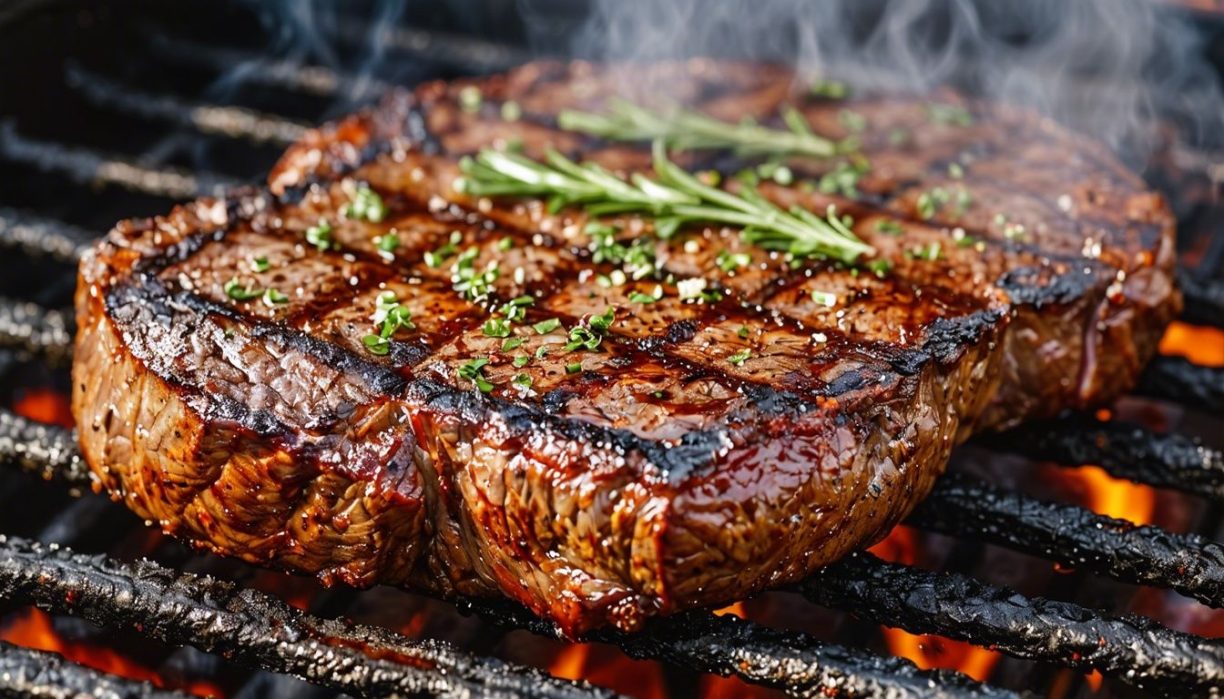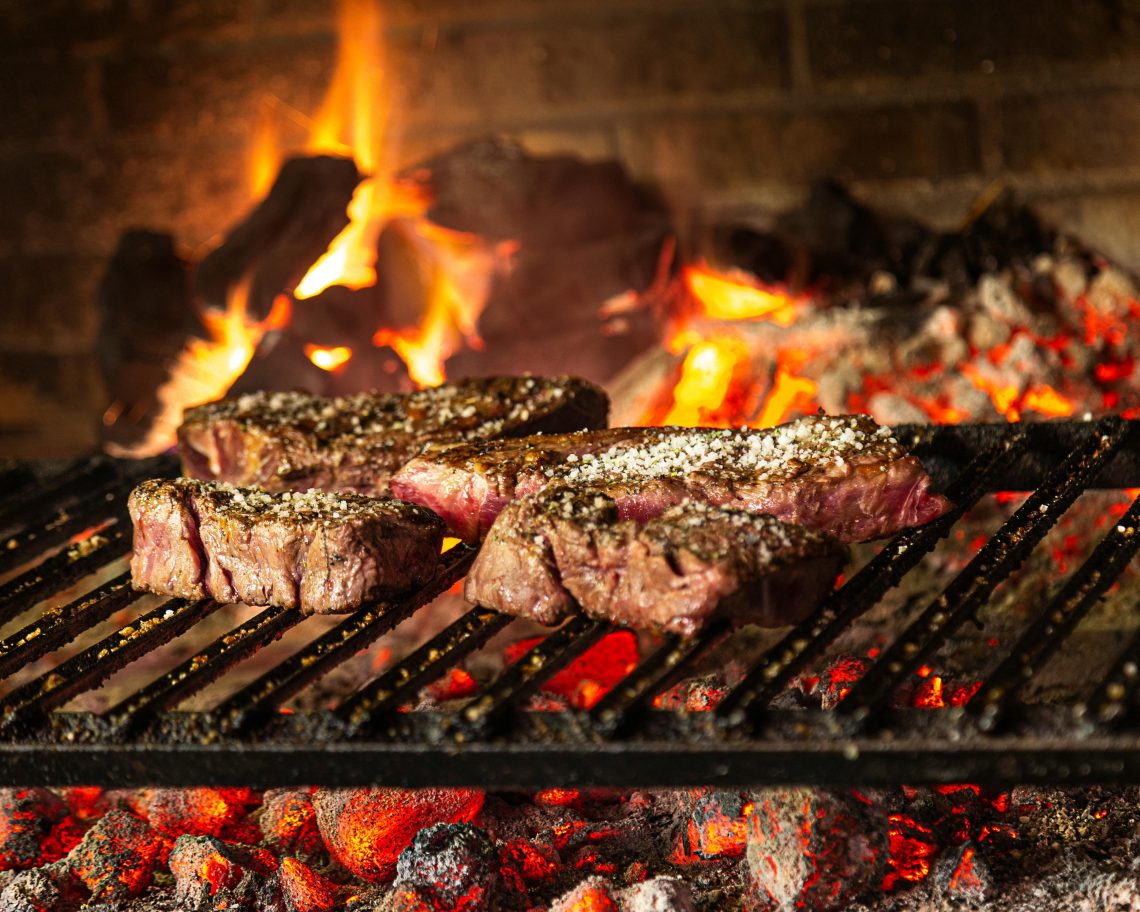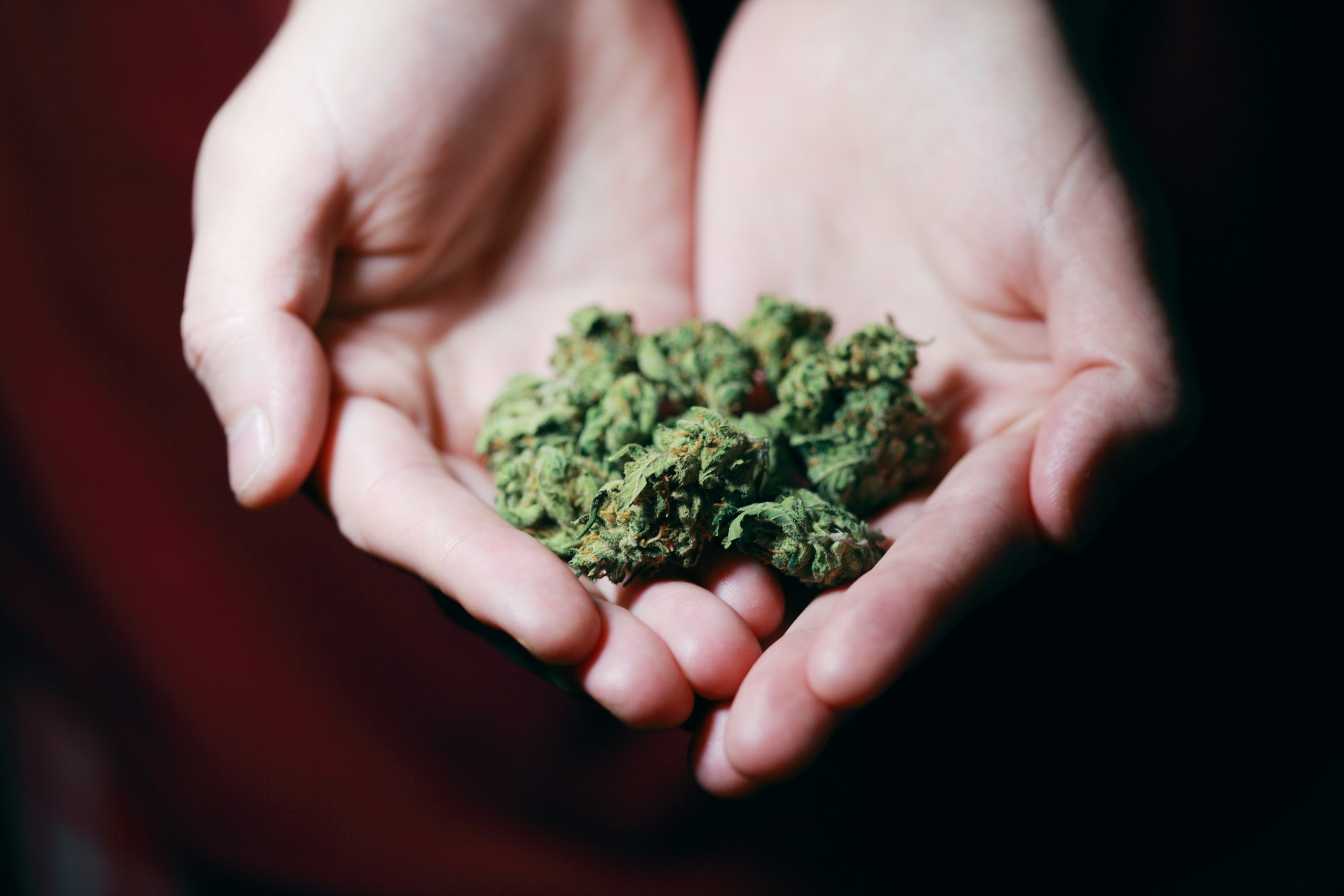Grilling the best tasting ribeye can sometimes feel like a tough challenge. You may struggle with getting that perfect char or ensuring the inside is just as flavorful as the outside. Plus, choosing the right cut and seasoning can be overwhelming with all the options out there. But don’t worry, we’ve got your back.
Did you know that letting your steak reach room temperature before grilling can make a big difference in how it cooks? This simple step is just one of many we’ll cover to help you master the art of grilling ribeye.
From picking out the best meat to serving it up with style, our guide will walk you through each part of the process. Get ready to impress at your next BBQ!
What Makes a Perfectly Grilled Ribeye?
Achieving the ideal char and perfect crust on a ribeye starts with choosing the right cut and proper seasoning.
Choosing the right cut
Picking the perfect ribeye cut is key for grilling success. Look for steaks with a lot of marbling—these are the little white fat lines running through the meat. This fat melts when cooked, making your steak juicy and full of flavor. The best thickness for a ribeye is about 1.5 inches. Thicker cuts stay juicier and develop a better char on high heat.
Avoid cuts that look too lean; they can end up dry and tough after grilling. Ribeyes from grass-fed beef often have great flavor but might be less fatty than grain-fed ones. Consider this if choosing between types of beef for your BBQ sauce-covered masterpiece or a simply seasoned steak to sear over charcoal.
Proper seasoning
After picking the right cut of ribeye, the next crucial step is seasoning it for maximum flavor. Seasoning a steak properly can make a big difference in taste. Salt and pepper are essential. They pull moisture to the surface of the meat, creating a perfect crust when grilled. Don’t be shy with these seasonings; cover every inch.
For those wanting more depth, adding garlic powder, onion powder, or even a bit of smoked paprika can introduce new flavors to your ribeye. Always season your steak at room temperature to help the seasoning stick better.
This ensures each bite is as delicious as possible. Mixing your favorite herbs and spices before applying them evenly on both sides will give you consistent flavor throughout.
Tips for grilling
Once you’ve mastered the art of seasoning your ribeye, it’s time to move on to grilling. Grilling a ribeye steak perfectly blends science and art to achieve that ideal char and juicy center.
- Preheat your grill to high heat. Aim for a temperature around 500°F to get that perfect crust.
- Make sure steaks are at room temperature before they hit the grill. This ensures even cooking.
- Oil the grill grates lightly before placing your steak on them to prevent sticking.
- Keep the lid up for charcoal grills but down for gas grills to control airflow and temperature.
- Place your ribeye on the hottest part of the grill first. Sear each side for about 2 minutes to lock in flavors.
- Move the steak to a cooler part of the grill if you’re aiming for medium-rare or beyond.
- Turn steaks with tongs instead of forks to avoid piercing them and losing juices.
- Use a meat thermometer to check doneness; 135°F for medium-rare is perfect.
- Let your steak rest for about 5-10 minutes after grilling; this allows juices to redistribute throughout the meat.
- Experiment with wood chips like hickory or mesquite for added flavor through smoking techniques.
Grilled ribeye should be a flavorful journey from prep to plate, achieving that balance between seasoning, heat, and technique is key to mastering the grill game!
Ingredients and Substitutions
Explore various types of ribeye, recommended seasonings, and how to substitute ingredients for a unique twist on this classic dish. Deviating from the standard list under it is strictly important.
Types of ribeye
When it comes to ribeye, there are three main types: the boneless ribeye, also known as a Delmonico or Spencer steak; the bone-in ribeye, often called a cowboy steak due to its larger size and attached bone; and the tomahawk ribeye, which features an extra-long bone for added flavor and visual appeal.
Each type offers a unique eating experience and can be chosen based on personal preference or cooking method. The boneless ribeye is convenient for those who prefer easy slicing, while the bone-in varieties are favored by those seeking richer flavors from meat cooked on the bone.
Amongst these options, understanding meat cuts becomes pivotal in selecting the ideal ribeye for grilling purposes. Mastering this aspect ensures that you achieve steak perfection when embarking on your grilling journey.
Recommended seasonings
After understanding the different types of ribeye, it’s time to focus on the recommended seasonings. For a classic and flavorful ribeye, a simple seasoning of kosher salt and freshly ground black pepper works wonders.
You can also add garlic powder or onion powder for an extra kick of flavor. Experiment with various herbs such as rosemary or thyme to elevate the taste profile without overpowering the natural flavors of the meat.
When it comes to unlocking the secrets of great-tasting ribeye, consider using a blend of smoked paprika and cayenne pepper for a smoky and slightly spicy flavor. A touch of brown sugar can enhance caramelization while adding depth to the overall taste.
Remember that when it comes to seasoning your ribeye, less is often more – allowing the quality of the meat to shine through is key.
Substituting for ingredients
You can easily substitute ingredients in your ribeye recipe to suit your preferences or what’s available. Here are some tips for substituting ingredients:
- Types of ribeye: If you can’t find traditional ribeye, you can use boneless ribeye, ribeye cap, or tomahawk steak.
- Recommended seasonings: Instead of traditional salt and pepper, try using steak seasoning blends, garlic powder, or smoked paprika for a different flavor profile.
- Substituting for seasonings: If you don’t have a specific seasoning, consider using a mix of herbs like thyme, rosemary, and oregano for a fresh herb flavor.
- Grilling oil alternatives: While olive oil is commonly used, you can also use avocado oil, grapeseed oil, or clarified butter for grilling your ribeye.
These simple substitutions can help you customize your grilled ribeye to achieve the perfect flavors and make the most out of what’s available to you.
Preparing and Grilling Ribeye
Prepare the grill, follow grilling instructions, check the temperature and let the steak rest for a juicy ribeye. Read more to perfect your grilling technique!
Preparing the grill
Before grilling, ensure the grill is clean and preheat it to high heat for about 15 minutes. Oil the grate lightly to prevent sticking. For gas grills, close the lid during preheating and when cooking; for charcoal grills, keep the lid open until ready to cook your ribeye.
When preparing the grill for a ribeye steak, always aim for high heat and a clean surface. Lightly oiling the grate will help prevent sticking while achieving those perfect grill marks.
If using a gas grill, remember to keep the lid closed both when preheating and during cooking. For charcoal grills, be sure to leave the lid open until you’re ready to cook your delicious ribeye steak!
Grilling instructions
To grill the perfect ribeye, follow these simple grilling instructions:
- Preheat the grill: Ensure the grill is preheated to high heat to achieve a good sear.
- Season the steak: Rub both sides of the ribeye with your choice of seasoning, ensuring it’s generously coated.
- Grill the steak: Place the seasoned ribeye on the hot grill and cook for about 4-5 minutes per side for a medium-rare doneness.
- Check doneness: Use a meat thermometer to ensure the internal temperature reaches 135°F for medium-rare or adjust as per desired doneness.
- Let it rest: Once done, move the steak to a plate and let it rest for 5-10 minutes before serving to seal in the juices.
Checking the temperature
After grilling the ribeye according to the given instructions, use a meat thermometer to check the internal temperature. Insert it through the side of the steak into its thickest part without touching bone or fat.
For medium-rare doneness, aim for 135°F (57°C) and for medium, target 145°F (63°C). Remember that after removing from heat, there’s usually a rise in temperature by around 5°F (3°C) while resting.
Ensure not overcooking as it can lead to toughness. Personal preference might vary but using a meat thermometer guarantees your desired level of doneness every time you grill that perfect ribeye steak.
Letting the steak rest
After checking the temperature, it’s crucial to let the steak rest. This allows the juices to redistribute and results in a more tender and flavorful steak. Resting for about 5-10 minutes before slicing will ensure a juicy and delicious ribeye.
Resting is vital as it lets the muscle fibers relax, preventing the juices from immediately escaping when you cut into the steak. During this time, carryover cooking occurs, where the internal temperature continues to rise slightly, leading to a perfectly cooked ribeye throughout.
So, after checking that your steak has reached its desired doneness, give it some time to rest for an incredibly savory dining experience.

Serving the Grilled Ribeye
Picking the perfect sides and exploring recipe variations can add a delightful twist to your grilled ribeye experience. Enhance your dining with suitable sides and inventive recipes to make your meal truly exceptional.
Recommended sides
Enhance your ribeye experience with these mouthwatering accompaniments:
- Grilled Vegetables:
Pair your ribeye with vibrant and charred vegetables like bell peppers, zucchini, and asparagus for a burst of flavor and color.
- Creamy Mashed Potatoes:
Indulge in the richness of creamy mashed potatoes that perfectly complement the savory goodness of a grilled ribeye.
- Tangy Caesar Salad:
Balance out the richness of the ribeye with a refreshing Caesar salad tossed in a tangy dressing, topped with crunchy croutons and parmesan cheese.
- Garlic Butter Mushrooms:
Elevate your steak game with succulent garlic butter mushrooms that add depth and earthiness to each juicy bite of ribeye.
- Crispy Onion Rings:
Savor the delightful combination of crispy onion rings alongside your perfectly grilled ribeye for an added texture and flavor contrast.
Now, let’s explore some delectable recipe variations to elevate your grilling game!
Recipe variations
Want to switch up your ribeye game? Check out these delicious recipe variations to add a new twist to your grilling adventure:
- Herb-Infused Ribeye: Elevate the flavor with a herb marinade of rosemary, thyme, and garlic for a fragrant and savory taste.
- Spicy Cajun Rub: Add some heat with a cajun rub featuring paprika, cayenne pepper, and black pepper to tantalize the taste buds.
- Asian-Inspired Soy Glaze: Create an umami-rich dish by marinating the ribeye in a blend of soy sauce, ginger, and sesame oil for an infusion of Asian flavors.
- Smoked Ribeye: Take the grilling experience up a notch by infusing the meat with aromatic wood smoke for a rich and smoky finish.
- Chimichurri Topping: Top off your grilled ribeye with a zesty chimichurri sauce made from fresh herbs, garlic, vinegar, and olive oil for a burst of vibrant flavors.
- Teriyaki Twist: Give your ribeye an enticing sweet and savory profile by marinating it in teriyaki sauce blended with pineapple juice and ginger.
- Coffee-Rubbed Ribeye: Infuse your steak with richness using a coffee-based rub that offers deep, robust flavors complemented by spices like cocoa powder and chili powder.
Enhance your grilling repertoire with these exciting recipe variations guaranteed to impress your guests or elevate your at-home dining experience!
Tips and Tricks for Grilling the Best Ribeye
To grill the best ribeye, choose a well-marbled steak, use a simple seasoning like salt and pepper, and let the meat rest after grilling. Dive into mastering grilling methods with budget-saving tips and essential equipment for achieving steak perfection.
How to choose the best cut
When choosing the best cut of ribeye, look for a well-marbled piece with fat evenly distributed throughout the meat. Opt for USDA Prime or Choice grades for superior tenderness and flavor. Select cuts that are at least 1 inch thick to ensure juiciness and a succulent texture when grilled.
Consider bone-in ribeye steaks for added flavor, as the bone enhances the overall taste during grilling. Additionally, choose cuts that have been aged for maximum tenderness and depth of flavor.
Keep in mind that thicker cuts require longer cooking times but yield a juicy interior and delicious charred crust when prepared correctly on high heat.
Budget-saving tips
To grill a ribeye steak on a budget, consider purchasing family packs or larger cuts of ribeye when they are on sale. Buying in bulk often results in lower prices per pound and can save money in the long run.
Another tip is to look for lesser-known butcher cuts that offer the same flavor and tenderness as traditional ribeye but at a lower cost. Additionally, consider joining loyalty programs at local grocery stores which may offer discounts or special deals on meat purchases.
When choosing the best cut, think about budget-saving tips like buying family packs or looking for lesser-known butcher cuts to reduce costs without compromising on flavor and tenderness.
Joining grocery store loyalty programs can also lead to discounts or special deals on meat purchases.
Necessary equipment
A reliable meat thermometer, preferably digital, is essential to ensure the ribeye is cooked to perfection. A pair of long-handled tongs for flipping the steak without losing those precious juices and a wire brush for cleaning the grill grates are indispensable tools.
Finally, investing in a high-quality grill with precise temperature control will make all the difference in achieving that ideal sear and crust on your ribeye.
Conclusion
Master the art of grilling the best ribeye with these simple tips and tricks. Achieve the perfect char and seasoning for a mouthwatering steak every time. Serve up delicious variations and sides to impress your guests. Elevate your grilling game with these expert techniques and make every ribeye a masterpiece!
Read more cooking articles at ClichéMag.com
Images provided by Deposit Photos, BingAI, Adobe Stock, Unsplash, Pexels, Pixabay & Creative Commons





